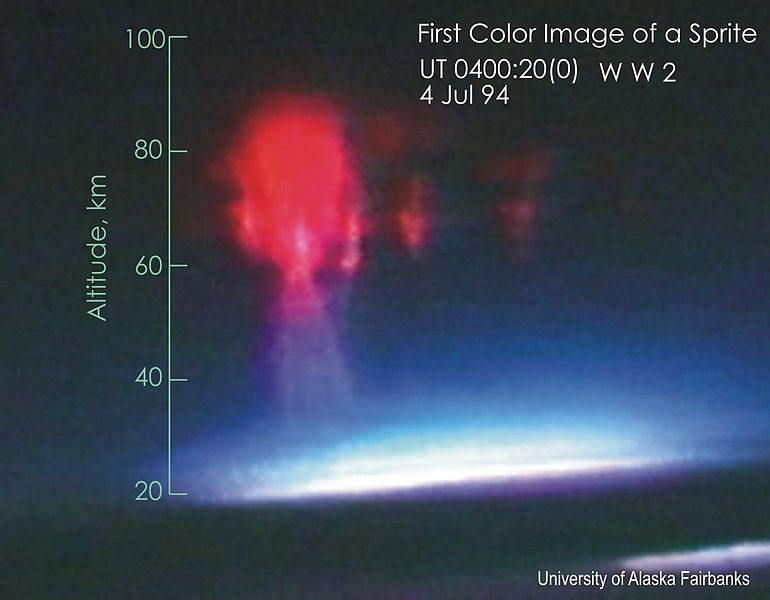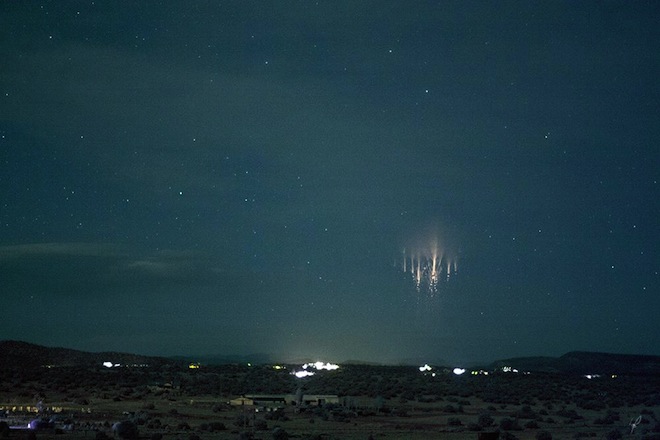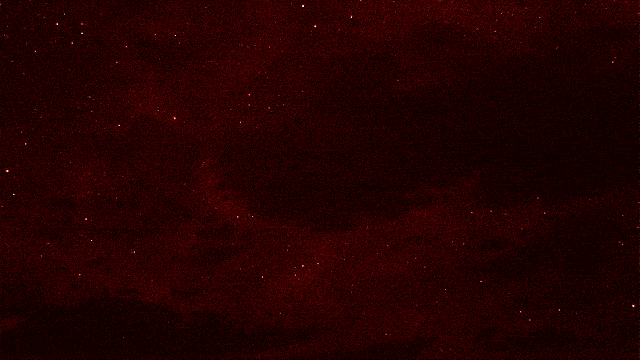They stretch 80km into Earth’s upper atmosphere. They shower the night sky with shimmering bursts of light. They emit a crackling “ping” over radio. And because they’re so fast scientists have only known about them for a few decades. Today, Wired Science introduces us to the world of Transient Luminous Events — and the Sante Fe astronomer who has pioneered the art of photographing them.
Thomas Ashcroft is a photographer and amateur astronomer who has captured dozens of Sprites (yep, they’re named after Puck in A Midsummer Night’s Dream) by taking continuous long-exposure shots from his home in New Mexico. Ashcroft lists his Sprite captures by grouping them into categories: Jellyfish, carrots, columnforms, and even “Elves”, a separate type of sprite caused by nitrogen molecules. Ashcroft reports that Sprites even have their own noise:
When I began to examine the sprites in my videos with high scrutiny I started to notice a pattern of associated radio sound in that some of them manifested a VHF forward scatter reflection “ping” much like meteors do.
Only a few decades ago, Sprites and Elves were impossible to catch on film. Pilots have long reported seeing bright flashes in the sky, but the stigma of reporting such a sight — unwitnessed by astronomers — led many to write them off as optical illusions. But in 1989, photography had evolved to a point where a group of scientists captured a Sprite on film (albeit accidentally). Two years later, astronauts aboard the ISS confirmed with video.

So what, exactly, is happening when Sprites occur? It’s a nascent area of research, but in essence, each Sprite is a form of lightning that occurs in the upper limits of the atmosphere — what scientists call the mesosphere, around 100km up. They’re triggered by regular old storm cells, which discharge positive lightning between the cloud and the ground. Above the cloud, Sprites move upward in massive blooms of cold plasma. In some cases, they’ve even been blamed for the failure of high-altitude balloons.
Ashcroft describes the mesosphere in biological terms. “Turns out there’s this whole ecological zone, the mesosphere, that’s inhabited by these, well, they’re almost creatures,” he told the Sante Fe New Mexican in June. “They’re plasmid like, but the forms they take are almost zoological.”
Incredibly, Sprites are as old as the Earth itself — which is enough to make you wonder what other atmospheric phenomena will be explained as photographic technology evolves. [Wired Science; Sante Fe New Mexican; Thomas Ashcroft]


Pictures: Thomas Ashcroft
